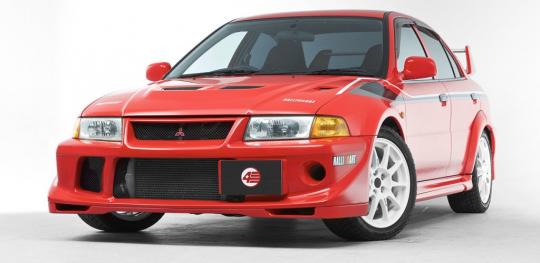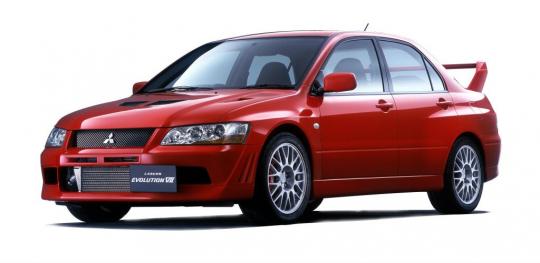Since October 1992 to March 2016, Mitsubishi has manufactured no less than ten iterations of the Lancer EVO. As you may have also heard, there will be no Lancer Evolution XI because, as fate would have it, the Japanese manufacturer is more interested in crossovers and PHEVs as of late. Hence, the Subaru WRX STI will soldier on alone as if it were the last tree standing after a tornado tore through the city.
There’s another reason why we should remember the Lancer Evolution. That reason is the so-called MPGgate, the humongous scandal that could see Mitsubishi bite the dust. In less than a week since the media found out that 625,000 kei cars had their fuel economy data manipulated, Mitsubishi Motors Corporation has lost more than 40 percent of its market value or $3.2 billion. Lest we forget, Mitsubishi is a smaller carmaker than Volkswagen, which is why this unwieldy scandal can prove fatal for the company.
These said, Mitsubishi is more than the Lancer Evolution. Over the years, it gave us instant classics such as the Montero (Pajero), Starion, Eclipse, Galant VR-4, and 3000GT VR-4, just to name a few. But then again, Lancer EVO is a nameplate that stirs petrolhead blood more than other Mitsubishi high points do.
Without further beating around the bush, let’s pay our respects to the EVO:1992 Mitsubishi Lancer Evolution I (CD9A)

Before the Evolution became a thing, Mitsubishi established itself off the beaten path with the 500 Super Deluxe of the 1960s, Lancer 1600 GSR of the 1970s, and a Pajero that won the Paris-Dakar rally in 1985. The predecessor to the first-gen Evolution is the Galant VR-4 mentioned a paragraph beforehand, which featured the same 2.0-liter turbo inline-four and AWD system that would come to be employed by the Mitsubishi Lancer Evolution I between ’91 and ’94.
Believe it or not, the 4G63T engine would be used by all EVOs bar the 10th incarnation. From 247 PS (244 horsepower) and 309 Nm (228 lb-ft) of torque in the Evolution I, the four-cylinder turbo went on to develop 291 PS (287 horsepower) and a bucketload of torque in the ninth generation of the Evolution.
The most focused variant of the first-gen EVO, except for the rally car, is the Evolution I RS. Compared to the creature comfort-laden GSR, the RS dieted to such an extent that it lost 154 pounds (70 kilograms) over the model it is based on. Oh, and another notable thing: the RS came with steelies and a mechanical plate type limited-slip diff, not the viscous limited-slip rear differential of the GSR.1994 Mitsubishi Lancer Evolution II (CE9A)

The second Evolution started production in December 1993 and was killed off in February 1995. Compared to the CD9A platform of the first EVO, the CE9A-based Evolution II brought handling improvements and a little more muscle.
Some of the chassis adjustments include the longer wheelbase (2,510 mm or 98.8 inches compared to 2,500 mm or 98.4 inches), 10 mm (0.4 inches) wider tires, wider tracks, lighter swaybar, and larger spoiler. Regarding motivation, the engineers increased output to 256 PS (252 hp) and torque remained unchanged.
On the aesthetic front, there’s little in the way of differences between the EVO II and the EVO I. The Evolution has always been about small adjustments and the metamorphosis from first to second demonstrates this practice best of all.1995 Mitsubishi Lancer Evolution III (CE9A)

Based on the same architecture as the EVO II, the Lancer Evolution III is all about small improvements to the formula. To me, the third Evolution is the EVO that defined how all EVOs should look as far as the exterior is concerned.
The nips and tucks you can admire in the photograph above were made in the name of aerodynamics. See the nose molding? Designers worked back-to-back with the engineers to improve the air supply to the intercooler, radiator, and front brakes. The side skirts, rear bumper moldings, and rear spoiler were also developed with a certain intention in mind: reduced lift at high speeds.
Underhood, output went up to 273 PS (270 horsepower) and torque stayed put at 309 Nm (228 lb-ft). Some of the most notable changes brought to the four-cylinder turbocharged engine include a higher compression ratio than before and a 16G turbocharger (TD05H-16G6) that is oh-so-familiar with the EVO crowd. Oh, and another thing: the rally-spec Lancer Evolution III went on to win the drivers’ championship in the 1996 World Rally Championship thanks to Tommi Makinen, the Finnish rally driver who would also win three more drivers’ titles with the Lancer EVO IV (’97), Lancer EVO V (’98), and Lancer EVO VI (’99).1996 Mitsubishi Lancer Evolution IV (CN9A)

I will be frank with you and admit that the EVO IV is the Lancer Evolution I would park in my dream garage. Everything about it, from the large fog lamps to the aggressive-looking hood, makes my petrolhead senses kick into overdrive.
Other than a heavier and stiffer platform, the EVO IV prides itself on twin-scroll turbocharging technology, more power from the 4G63T engine (280 PS or 276 hp), and an active rear differential as part of the Active Yaw Control system.
Albeit simple by modern standards, the Active Yaw Control (AYC) system employs sensors and an electronic brain that work together to redistribute the available torque to whichever of the four wheels needs it the most. Easy-peasy.1998 Mitsubishi Lancer Evolution V (CP9A)

The successor of the fourth is a more gung-ho affair as far as exterior design is concerned. Check out those flared wheel arches that hide the wider front and rear tracks! Better still, the rear wing of the EVO V is adjustable. This fact will certainly impress the ladies on a first date… or not. No, definitely not, sorry folks!
As for the interior, the Lancer Evolution V is equipped with Recaro seats. Once you peel off the skin, you’ll notice subtle improvements such as a master cylinder bore increased by 0.3 mm (0.01 inches), a strengthened engine w
ith bigger injectors (560 cc instead of 510 cc), and more boost pressure for the turbo.
Compared to the 330 Nm (243 lb-ft) of torque developed at 4,000 rpm by the EVO IV, the fifth Lancer Evolution upped the ante to 373 Nm (275 lb-ft) at 3,000 rpm. This makes up for a striking difference in off-the-line and in-gear acceleration.1999 Mitsubishi Lancer Evolution VI (CP9A)

Ah, the sixth Lancer Evolution in Tommi Makinen Edition flavor. Oh, how I miss the 1990s. Daydreaming aside, the EVO VI wasn’t all that different from its predecessor apart from the improved cooling and durability of the 4G63T engine.
To do that, Mitsubishi engineers equipped the EVO VI with a larger oil cooler and intercooler, bestowed new pistons upon the engine, and the list goes on and on and on. The RS, however, prides itself on a titanium-aluminide turbine wheel.
For those who wanted the go-faster credentials of the RS but with the creature comforts of the GSR, the Lancer Evolution VI is also available in RS2 flavor. Other than the added well-being, the RS2 is the first EVO model to be equipped with ABS brakes, a safety feature that became the standard in Europe in 2004.2001 Mitsubishi Lancer Evolution VII (CT9A)

Because it is based on the Lancer Cedia platform, the EVO VII has grown a bit over its predecessor. When equipped with all the bells and whistles available in the options list, the EVO VII can surpass the 1,400-kilogram (3,086-pound) mark.
Despite the gain in weight, the EVO VII made up for this handicap with some chassis tweaks, the most important being the active center differential, better rear limited-slip diff, and the front helical limited-slip differential. Power went up as well.
Taken together, the active center differential and Active Yaw Control system improved the turn-in of the EVO VII. Other than the sharp steering, the focal points of the Lancer Evolution VII allow for arse-out action with little effort from the driver. 2003 Mitsubishi Lancer Evolution VIII (CT9A)

For the eighth installment of the rally-bred franchise, Mitsubishi enhanced the handling with Super Active Yaw Control. Another first for the Evolution genre came in the form of a 6-speed manual. Except for weight, more is always better, alright?
In the case of the FQ 400, sold in the United Kingdom through Ralliart, there’s a bit of a witticism surrounding the FQ acronym. The word that starts with F stands for the best fun one can have while naked. Q, on the other hand, stands for quick.
And yes, finally, the Lancer Evolution would feel North American soil under its rubber shoes with the EVO VIII. The bad news regarding the U.S.-spec EVO VIII is that it was initially available with a 5-speed and didn’t come with active yaw control.2005 Mitsubishi Lancer Evolution IX (CT9A / CT9W)

A slightly updated EVO VIII? It’s OK to call the EVO IX as such, but then again, you’d be proven wrong by the enhancements brought by Mitsubishi. Oh, there’s another thing about the Lancer Evolution IX you shouldn’t take for granted: this is the first EVO to be offered as a wagon. Yes, a fan-bleedin’-tastic longroof!
The Japanese automaker built 2,500 pieces of the darn thing and sold them all in Japan. As you can see in two pics featured in the gallery below, the EVO IX station wagon uses the rear end of the Lancer Sportback grafted onto the sedan.
Even though active yaw control was nowhere to be found and it weighed considerably more than the regular EVO IX, the Mitsubishi Lancer Evolution IX wagon could carry a canoe on its roof and harass supercars at the same time. Best family car ever? No, but it’s up there in the top 10 coolest family cars ever.2007 Mitsubishi Lancer Evolution X (CZ4A)

Oh boy, where do I start with the tenth iteration of the Lancer Evolution? For starters, it appears like it tries too hard to look like an EVO. Secondly, this is the first EVO to ditch the 4G63T for the all-aluminum GEMA 4B11T four-pot.
Another thing that made the Evolution X a bit of a downer with the EVO crowd is the fact that it can weigh as much as 1,600 kilograms (3,527 pounds). In colloquial terms, the Mitsubishi Lancer Evolution turned into a bit of a porker compared to the 1,170 kilograms (2,579 pounds) of the first EVO in RS form.
When all is said and done, the most disappointing thing about the EVO X is that Mitsubishi sent it off with a Final Edition that churns out 303 horsepower, up from 291. The Brits have been luckier than the rest of the world because they’ve got the FQ-440 MR, a special edition that’s packing 450 PS (444 horsepower).
Whatever the future holds, one thing is for certain: the EVO will forever live in our hearts.








